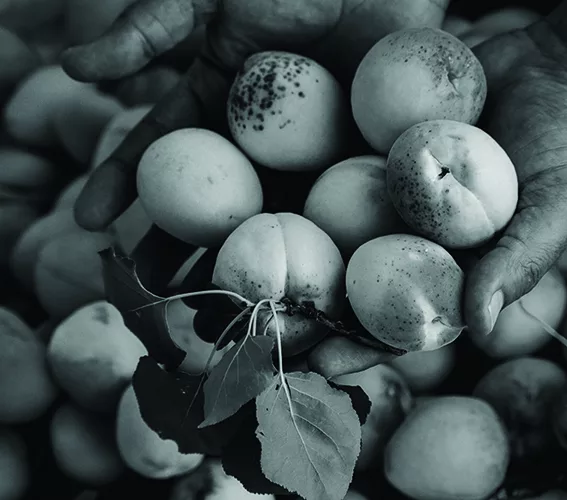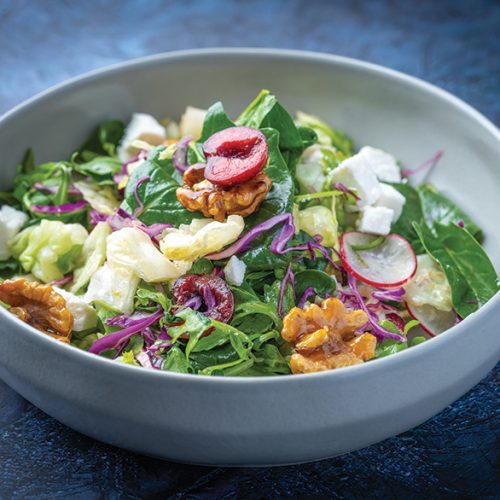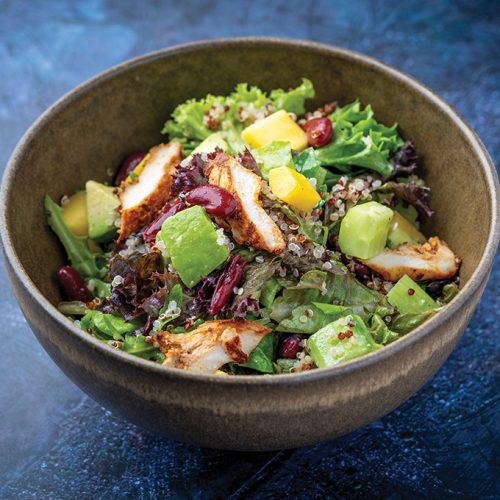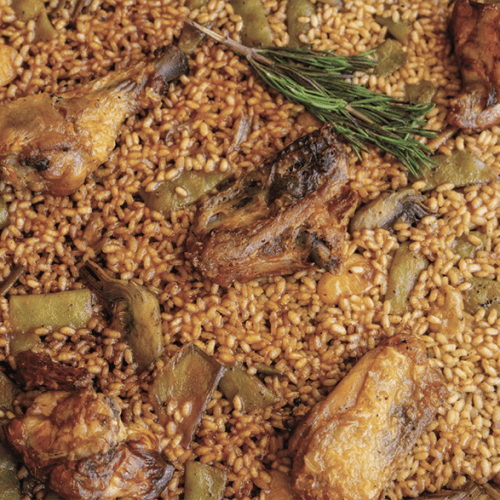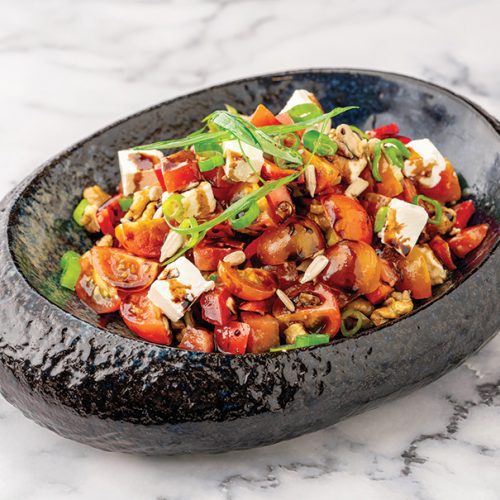The brilliant chef behind The Wandering Kitchen pop up dinners that many enjoyed over Autumn and winter, takes a last walk in the countryside before he leaves for his travels again to pick up new tips and skills to add to his already impressive own.
Nasturtiums

Found in the Maltese countryside in certain areas, the leaves and flowers are edible and in season now. The leafs have a slight peppery taste, similar to watercress, and like watercress, it’s packed with vitamin C which helps improve the immune system. The flowers add a lovely bright touch to dishes especially salads. The leaves are lovely for dressing or to make a salad with, or simply chop roughly and fold into an omlette. Also, it can be substituted for basil in a pesto.
Nasturtium salad- (bright and vibrant colors)
Ingredients
500g new potatoes
300 g baby spinach
30 nasturtiums leaves
200g rocket
2 beetroots
2 tbsp. apple cider vinegar
1 tsp. sea salt flakes
1 tbsp. olive oil
1 tsp. Dijon mustard.
5 nasturtiums flowers
Method
Boil potatoes till cooked in salted water, let cool. Roast beetroots with salt and olive oil, peel and cut into pieces. Mix olive oil, vinegar, Dijon and salt together into vinaigrette. Mix into potatoes and season to taste
Mix beetroots in with a bit more olive oil. Mix into salad leaves and arrange flowers on top.
(Can add a seed mix to add a nice crunch to dish)
Borage

Borage is in season now and the flowers are popping up everywhere. The flowers and leaves are both edible; the flowers add a lovely touch to salad and have a slight nutty flavour, and the leaves once cooked, lose their prickle exterior, yielding a slight taste of cucumber. Borage is bursting with health benefits and is used in the treatment for eczema, high blood pressure and rheumatoid arthritis. The flowers can be used to bring colour to a variety of dishes or to spruce up a fancy cocktail. The leaves can be cooked and added to salads or turned into this unusual snack of borage leaf tempura with a garlic aioli.
Borage tempura with garlic aioli
Ingredients
40 borage leaves (washed and stalks removed)
1 egg
200 g plain flour
70 g corn flour
300ml soda water
1 litre high grade veg oil (for frying)
1 clove garlic
1 egg yolk
1 tsp. Dijon
Salt/ pepper
Lemon juice to taste
500 ml olive oil
Method
To make aioli, crush garlic with salt until fine. In bowl whisk egg and mustard together, then slowly add oil while whisking constantly (you can always use a blender to do this). Once mixture thickens and the lemon juice and season to taste. Add in garlic mix and fold in, adjust taste to preference
To make the tempura batter, mix flours together, whisk egg and soda water together, then add flours and fold in. (you can add more soda water if you want a lighter batter, or add less to have a thicker one, I prefer a light batter as brings out the ingredients inside more)
Heat the veg oil to 180 C, once hot, add borage leaves to batter, mix, shake off any excess and cook in small batches, (don’t over crowd the pan or they won’t cook evenly) remove after they have turned golden and crisp and place on paper towel to soak up excess oil. Repeat till all done. Serve with aioli and borage flowers
Nettles

Nettles are growing all over the countryside now, and even though they don’t look very inviting, they are edible and make a delicious soup or tea. They also punch a few health benefits such as helping your kidneys and urinary tract, stimulate hair growth and help control blood sugar levels especially those with diabetes. Watch out when picking as they do sting! I would use gloves to pick them.
Nettle Soup
Ingredients
500 g nettles (washed and leaves picked, use gloves to pick!)
1 onion
1 carrot
1 medium potato
1 leek
Sprigs of wild thyme
1 tsp. fennel seeds
1 litre vegetable stock
40 g butter
Cream (optional)
Method
Finely chop carrot, onion, potato and leek.
Heat butter up in pan on medium heat and then add vegetables and fennel seeds fry off till soft. Add vegetable stock and cook on medium heat for another 15 minutes. Add the nettle leaves and simmer till they wilt. Blend and then season, add the cream here if you’re after a creamier soup. Serve with bread and olive oil drizzled over the top.
Wild thyme

Wild thyme is everywhere in Malta; to me, walking in the countryside in Malta is the smell of wild thyme, with its lovely strong flavored scent, a lot more floral and pungent then normal thyme. It also has a lot of Vitamin A and C in it. It can be used to replace normal thyme in cooking, used to flavour oils and salts and is delicious roasted with fresh Maltese strawberries.
Thyme salt
Ingredients
500 g good quality sea salt (maldon)
10 sprigs wild thyme
Method
Pick leaves off thyme and then toss through salt, leave to infuse (the longer you leave the more thyme flavour the salt will take on.)
Wild Thyme roasted strawberries
Ingredients
6 sprigs wild thyme
1 punnet strawberries
½ tsp. black pepper
Method
Pre-heat oven to 180 degrees
Hull and halve strawberries and mix with thyme and pepper, put on tray. Bake in the oven for a few minutes till slightly tender but still holding their shape. (If you prefer softer strawberries leave them in for around 6 to 7 minutes.)
Serve warm with vanilla ice cream or cold as a compote with yoghurt or just alone.
Rock Samphire

Rock samphire grows in locations over Malta, especially on the north side in rocks around the cliffs. The leaves are edible and are very floral and slightly salty. It has prominent levels of Vitamin C and minerals such as iron and zinc. It is considered a ‘sea vegetable’ and so pairs well with seafood. It works well boiled like asparagus and used with fish, pickled, in a salad or fresh adding a strong floral note.
Boiled rock samphire with lemon
Ingredients
500g rock samphire leaves
Juice of 1 lemon
Fresh pepper
Method
Bring a pot of water to the boil, add samphire and simmer for 7 minutes. Drain and season with lemon and pepper (doesn’t need salt as quite salty). This is a very simple version which will go well mixed into salads, alongside pan-fried sea bass with a little butter, or get creative and experiment with flavoured oils and seasonings.
Edible flowers

Not growing wild but available in certain supermarkets and from suppliers, usually a mixture of edible flowers (pansy, marigold, lavender, dandelion, Chrysanthemum and liliac). Each one has different health benefits, all are full of Vitamin C, calcium, iron and phosphorus. Dandelions are very good in tea and used as an antinflamatory and liver repair. Marigold is full of useful minerals like iron and calcium; they are also a reliable source of fibre.
The flowers can be used to brighten up any dish or cocktail, in salads, make butters with them, soups and cordials for cocktails.
Edible flower soup with Strawberries
This makes for an interesting and unique dish to serve at a dinner party, paring floral flowers with the sweetness of strawberries.
Ingredients
2 boxes edible flowers
3 tbsp. honey
2 sprigs wild thyme
500 ml water
1 punnet strawberries
Method
To make the soup, bring the water up to a boil, add the thyme and honey and mix. Turn off heat and add 1 box of edible flowers (keep the others for decoration). Let the water cool and let the flavors infuse, preferably overnight, can add more honey or flowers depending on how sweet or floral you want it. Strain the liquid and reserve. Cut up strawberries and place in a bowl, pour the soup over add a mixture of berries if you want and a dash of cream. Decorate with the flowers and serve.



